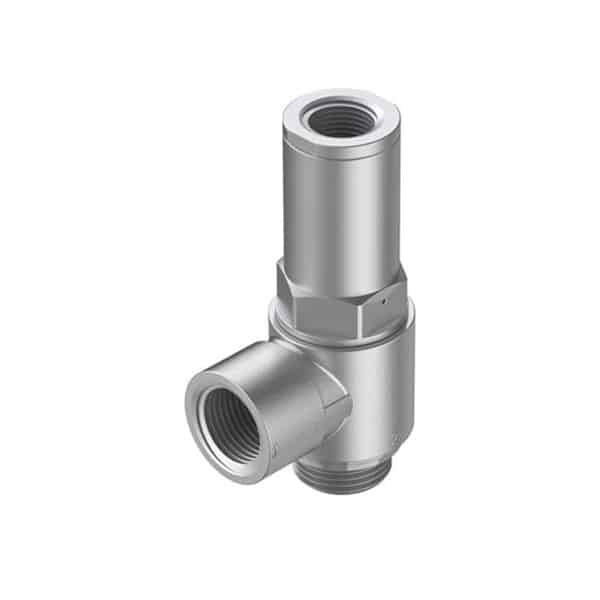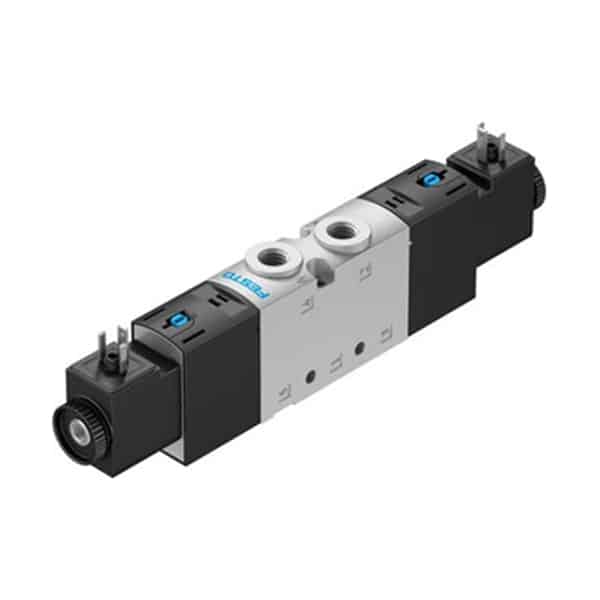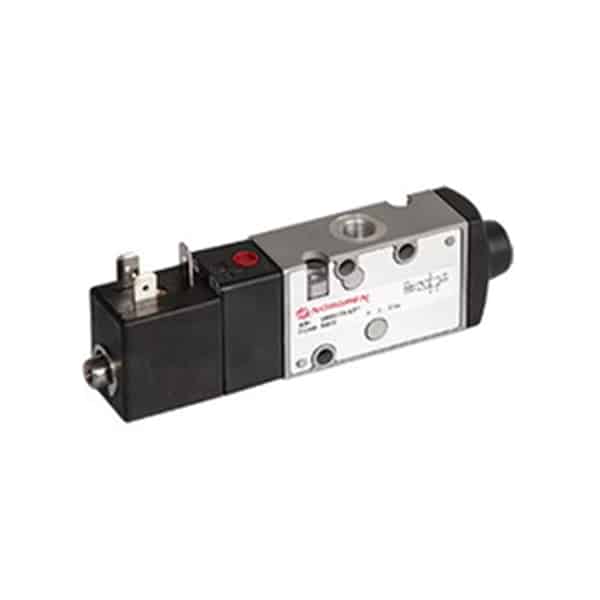Pneumatic valves are components that used in automation technology to control pneumatic actuators such as cylinders (rams) and rotary drives. The valve itself, can come in range of configurations from pneumatically actuated, Electric, mechanical, or manually actuated. In addition, we can supply valves that are used within a valve terminal, this will be dependent on your system requirements. Here at Parker Hydraulics & Pneumatics, we can also assist with ATEX ratings and connecting with IO Link and bus protocols.
We offer a wide variety of products designed to meet your needs, ranging from manual valves to fully automated solutions. Our valves are designed to be reliable and durable, and they are available in several sizes and configurations to meet your specific application requirements.

Pneumatically Actuated
Pneumatically actuated valves are typically operated by compressed air and offer a robust and reliable control. They also require minimal maintenance, making them a great choice for industrial applications.

Mechanically Actuated
Mechanically actuated valves are typically operated via roller switches, whiskers, stem or lever arms among others. Called mechanically operated as they are normally actuated by a physical part of the machine rather than the operator.

Electrical
Electro-pneumatic valves are solenoid operated, typically 24vDC but also available in 12vDC, 24vAC, 110vAC and 230vAC. Nowadays these are the most popular options and come in 2 port 2 position (2/2), 3 port 2 position (3/2), 4 port 2 position (4/2), 5 port 2 position (5/2) and 5 port 3 position (5/3). All of these are available to purchase in single or double solenoid variations, and the 5/3 valves have options for the centre position. These are all ports closed, all ports open and inlet blocked exhausting to atmosphere.

Manually Actuated
Manually actuated valves are valves that are activated manually with a push button, rotary switch, lever or handle as opposed to being automated by an electrical or pneumatic source. Manual valves are often used in applications where there is no need for what automated valves could provide, and there is more operator intervention. They are also generally a much more cost effective solution. Manual valves are available in a range of materials and sizes depending on the application. If you need help finding the right valve for your needs. Please let us know and we’d be happy to assist.
Top Selling Pneumatic Valves & Actuators
Brands Supplied:



Pneumatic Valves & Actuator Services Available from Parker Hydraulics
Alongside our range of pneumatic valves and auctuators, we also provide additional services to help along the way such as:
Datasheets
Technical Drawings
Pneumatic Valves & Actuators FAQs

Get in Touch
Whether you are looking for pneumatics, hydraulics or just some technical support, Parker Hydraulics are here to help. Get in touch with us using the contact form below and we will get back to you as soon as we can.






